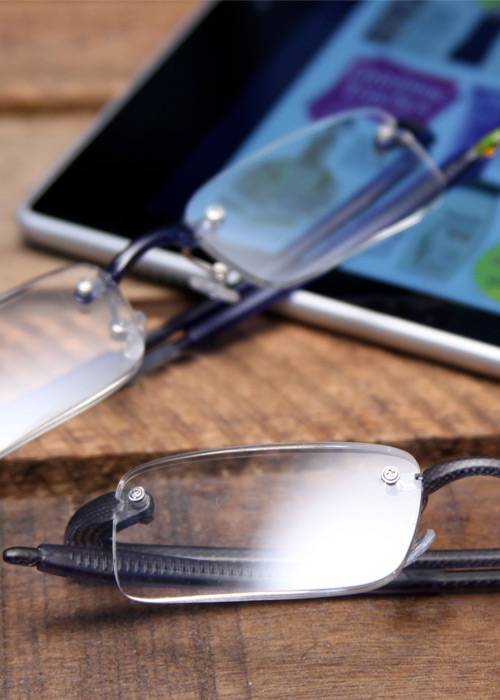Reading Glasses for Presbyopia

Why Reading Glasses are Necessary
As we age starting in the early to mid-40s, many adults may start to have problems reading and seeing clearly at close distances. This can be noticed when reading and working on the computer, these things can often lead to strain as well. Loss of clarity in vision and needing glasses are among the most common problems adults develop starting in their early forties. This is a normal change in the eye’s focusing ability and a condition known as presbyopia, which will continue to get worse over time.
Related blog posts
5 Tips for Protecting Your Vision Health as You Age
You may detect this by needing to hold reading materials farther away to see them clearly. In some cases you may need to remove your prescription glasses to see items better up close. You will notice print in the newspaper or on restaurant menus may appear blurry, especially in less than ideal lighting conditions.
It is not uncommon for nearsighted people who wear glasses to develop presbyopia, these changes in your near vision can be corrected by switching to bifocal or multifocal lenses.
Reading glasses are the fix for presbyopia and non-prescription lenses that can make it easier to read by magnifying the text on the page. Reading glasses help your eyes focus on the text faster and reduce eye strain. Prescription reading glasses are not necessary. Visualites lightweight reading glasses are design for presbyopia.
Reading glasses come in a range of powers that increase by 0.25 diopters, such as +1.00, +1.25, +1.50, and so on. The optical power of the human eye is about 40 diopters. The eye of a normal young person can adjust an additional 20 diopters. By age 25 this accommodation (the ability to alter focus) is usually reduced to about 10 diopters and by age 50 to a mere 1 diopter. It is this diminishing capacity for adjustment, called presbyopia, that warrants reading glasses. The optical power of a reading glass lens with a focal length of 1 meter (about 39 inches) and is the equivalent of 1 diopter. This formula is based on the reciprocal of the focal length, a 2 diopter lens is not 2 meters but 1/2 meter, a 3 diopter lens is 1/3 meter and so forth. Magnification effectively increases, as the focal length gets shorter, so the more magnification you need the higher diopter reading glasses you should buy.
There is benefit of using optical power instead of focal length, this being that the lens equation has the object distance, image distance, and focal length all as reciprocals. An additional benefit is that when lenses are placed close together their powers add to each other. So when a thin 2-dioptre lens is placed close to a thin 0.5-dioptre lens the two combine to create almost the same focal length as a 2.5-dioptre lens would have.
Visualites lightweight reading glasses are made from durable and ultra-lightweight hypoallergenic TR-90 material, perfect for those who may be occasionally rough on our glasses. With lenses that are handled with precision and care from the first cut to the final polish.
View our best selling rimless reading glasses the Visualites 1 here

